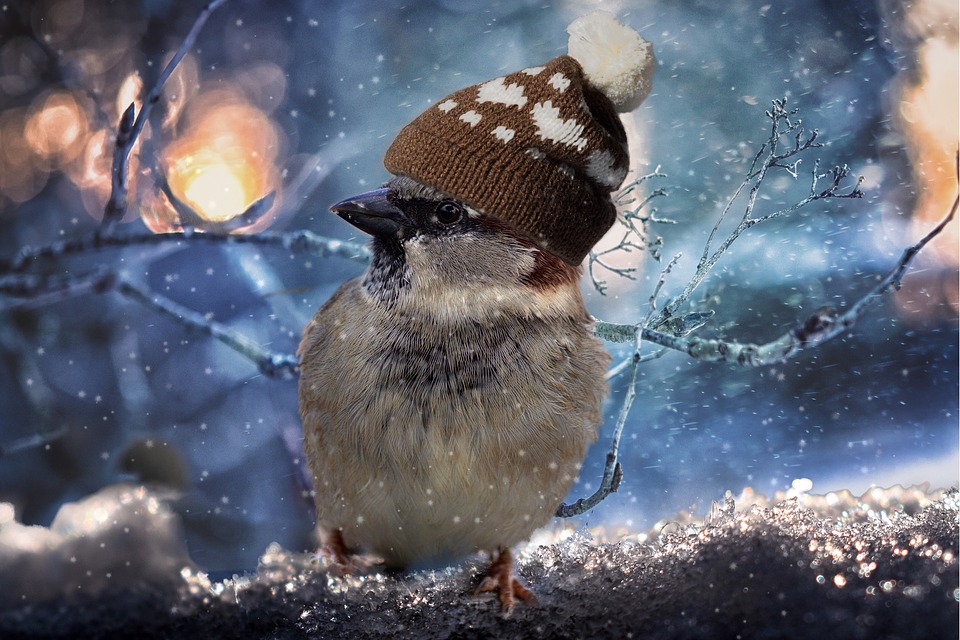The Farmers’ Almanac has made a bold – a cold – prediction for the coming winter. The long-range forecast, based on a mathematical and astronomical formula developed in 1818, predicts “teeth-chattering” cold nationwide. Closer to home:
“For Texas, Louisiana, Arkansas, New Mexico and Oklahoma, the almanac predicts ‘stinging cold, average precipitation.’ However, during the month of December, above-normal precipitation is expected in the South. The almanac also predicts that heavy rain will kick off fall in Texas in early October and bring with it lower temperatures along the Gulf Coast.” (via Austin-American Statesman).
While we search the backs of closets for long-forgotten parkas and bottom drawers for scarves and mittens, what can we do for wildlife to help them weather the cold? Thankfully, nature has equipped wildlife with a remarkable capacity for surviving frigid winter temperatures. White-tailed deer, for example, eat more in the fall, adding layers of fat to their bodies. Their reddish summer coats are replaced with winter coats that are thicker and have longer hair that is also hollow to trap air and provide insulation. The winter coat is also darker and absorbs more solar energy. In addition to the protective hair, the deer also sport an underfur for even more insulation and, thanks to a reaction something akin to our “goose bumps,” they have the ability to puff out their hair for an insulating effect. Similarly, birds prepare for the coming cold in autumn by eating more to add layers of fat and by molting and then growing in more and thicker feathers. By fluffing their feathers, they can also add in an insulating layer of air. Smaller birds, such as chickadees, also survive the severe cold by going into a state of torpor; their body temperatures drop and breathing, heartbeat, and metabolism slow to conserve energy.
All in all, wildlife know exactly what they’re doing when it comes to seasonal changes. But for a “teeth-chattering” winter? There are a few things we can do to increase their chances for survival.
Supplemental Feeding
From a 2-pound songbird bird feeder to a 200–pound turkey feeder, well-placed supplemental feeders are a relatively easy and effective way to provide supplemental food for birds, but they’re definitely not “set it and forget it.” Once you start feeding this way, it is very important that you keep it up and in good shape. Make sure your feeders are kept full and cleaned regularly to avoid contamination from aflatoxin. As the name indicates, aflatoxin is a toxic chemical produced by a mold that grows on grains. When consumed in sufficient doses, aflatoxin may reduce egg production, suppress immune response, and even kill. While the aflatoxin mold grows best in moist, warm conditions (versus, say, teeth-chattering conditions), always be aware that you’re storing your feed properly and keeping it as dry as possible.
When it comes to deer, something we can do is to not do something – feed them corn. Unless properly done, the supplemental feeding of deer is of little or no value thanks to the poor nutritional value of corn, the most popular deer feed used throughout most of Texas. It is low in protein ― protein is what deer actually need ― and high in carbohydrates. The best strategy for keeping your deer – and all wildlife – properly fed any time of year is a wildlife management strategy that nurtures native vegetation.
Preparing Nest Boxes
Some nesting birds may begin scouting for nest sites as early as January or February – aka winter! Texas is one of the earliest breeding grounds for Purple Martins, for example. Scouts arrive along the Texas coast in early January. Make sure your nest boxes are well-maintained and ready for winter arrivals.
Creating Brush Piles
Brush piles offer shelter and safe havens for all manner of birds and small critters. In the tangle of branches, birds build nests and mammals hollow out dens. But keep in mind that wildlife don’t wait for an invitation to hunker down in your carefully crafted brush pile designed just for them. If you have a brush pile of cleared cedar just waiting for your county burn ban to be lifted, be sure to consider what might be living deep within. Check for signs of life before lighting it up.









